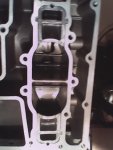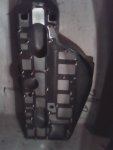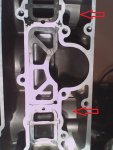stephenst4470
Cadet
- Joined
- Aug 27, 2015
- Messages
- 18
I have an 89 Force 150 that has water in the cylinder. (4 lower cylinders to some extent, especially the bottom cylinder) Motor had a bad impeller before I purchased it and I'm sure it was probably overheated. All cylinders have good compression (140 to 150 psi) I get a bunch of white milky substance spraying from the lower cylinders when I crank it over with water hooked up. (especially the bottom cylinder) I'm assuming I need to start at the head gasket. Do these have water jackets like a car that will leak into the cylinders with a blown head gasket? When I purchased it, it seemed to run fine but the problems started after the second time that we took it out. I have replaced the impellor and it now moved water like it should.

























